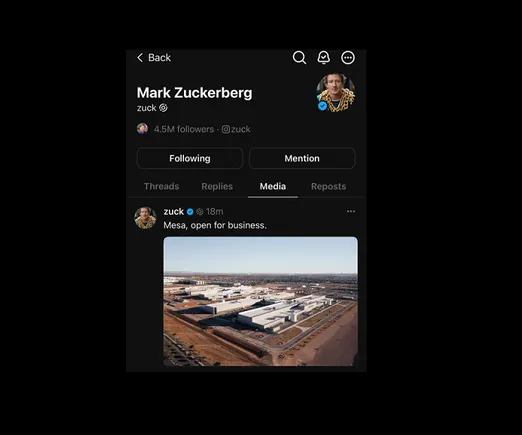More and more global brands are choosing to switch from a first-party model to a third-party e-commerce model. Transitioning from 1P to 3P offers broader market access and cost-savings. It leverages the power of various platforms’ and distribution partners’ established customer bases to broaden your reach. Here are some strategies for successfully making the transition.
In an ever-expanding global marketplace, international businesses are continually seeking ways to optimize their presence and market reach. One significant avenue for achieving this is the transition from a first-party (or 1P) model to a third-party (or 3P) e-commerce model.
This strategic shift brings a host of advantages and opportunities, but it also presents unique e-commerce challenges and opportunities that international brands must navigate. In this article, we explore the dynamics of this transition and provide insights into how international companies can harness the power of the 3P e-commerce model for global success.
Limitations of the 1P Model for International Companies
The 1P model, where brands sell their products directly to platforms like Amazon, provides international organizations with a degree of product control and access to existing customer bases. However, it comes with limitations. Global businesses may face challenges in scaling fulfillment and effectively managing the intricacies of local markets, including legal compliance and customer service expectations. This model may also limit market reach, as it requires extensive resources to establish a presence in multiple regions.
Unique Challenges for Global E-Commerce Businesses
International e-commerce businesses grapple with an array of challenges, including fulfillment issues, marketing hurdles, and integration complexities. Cross-border shipping, customs regulations, and varied customer expectations across different areas can make global expansion a logistical maze. Effective marketing in diverse cultural contexts is demanding, and integrating with local e-commerce platforms and payment systems can be daunting.
Advantages of the 3P E-Commerce Model for International Brands
The transition to the 3P model offers international brands a wealth of benefits. It provides a broader market reach by leveraging the established customer bases of platforms and distribution partners, which often have entrenched loyalty and trust from customers. The cost-saving opportunities are notable, as global brands can avoid heavy infrastructure investments by utilizing existing e-commerce ecosystems. Global organizations can redirect resources toward marketing and brand enhancement rather than extensive supply chain and distribution investments.
International E-Commerce Strategies for Marketing and Branding in Diverse Markets
Several international companies have successfully made the transition from 1P to 3P models. For instance, one company we worked with expanded its global footprint by partnering with regional distribution partners and harnessing the diverse marketplace reach of platforms like Alibaba and Amazon, reaching a broader spectrum of potential customers. This strategic shift not only widened its customer base, but also significantly reduced the overhead costs associated with direct sales.
When transitioning to a 3P e-commerce model, businesses should adapt their marketing and branding efforts for diverse markets. Here are four key e-commerce growth strategies:
- Localized marketing.
Tailor marketing campaigns to suit your target markets’ cultural nuances and preferences. This often involves language localization, which is much more than direct translation; it entails conveying the intended message in a culturally appropriate manner. Moreover, understanding cultural sensitivities is crucial to avoid unintended offenses that can tarnish your brand’s reputation. Aligning with local events, traditions, and trending topics can also significantly enhance brand relatability and engagement. For instance, incorporating regional festivals or local celebrities in marketing campaigns can foster a deeper connection with the local audience. - Market research.
Invest in comprehensive market research to understand the unique needs, desires, and purchasing habits of each market. This involves employing various data-gathering techniques such as surveys, focus groups, and analysis of purchasing trends to garner insightful data. The information gathered can then inform product offerings, pricing strategies, and marketing approaches, ensuring they are finely tuned to meet local demands. For instance, a product that’s a hit in one region might need a tweak in its features or pricing to appeal to consumers in another region. - Collaboration.
Partner with local influencers and experts to lend credibility to your brand within specific locales. These collaborators already have rapport with local audiences, and their endorsements can provide a significant boost to brand perception. Moreover, collaborations can offer valuable insights into local consumer behavior and preferences, which can be leveraged to refine marketing strategies. For instance, a local influencer can provide feedback on a product’s appeal in that region and help craft a more resonating marketing message. - Adaptation and flexibility.
Be prepared to adapt your product offerings and branding to respond to market feedback and changing consumer trends. Flexibility is essential for international success, enabling a swift response to market dynamics and ensuring your brand remains relevant and competitive. This could involve adapting marketing strategies based on consumer feedback, tweaking product features to meet local preferences, or altering pricing strategies to remain competitive in different markets. A culture of continuous learning and adaptation is indispensable in navigating the multifaceted challenges and seizing the opportunities in the international e-commerce landscape.
The transition from a 1P to a 3P e-commerce model holds immense potential for international clients looking to expand their global footprint. While challenges exist, the advantages — including broader market reach, cost-savings, and access to established customer bases — make this transition a strategic move for international e-commerce businesses seeking worldwide success. By embracing localized marketing and flexible international e-commerce strategies, global brands can navigate the diverse and dynamic global marketplace with confidence.
Written by Solomon Hedaya.
Have you read?
Countries With The Highest And Lowest Average Salaries, 2023.
Best Fashion Schools In The World.
Best Business Schools In The World.
The World’s Best CEOs And C-Suite Executives, 2023.
World’s Most Influential and Innovative Companies.
World’s Best Hospitality And Hotel Management Schools.
Add CEOWORLD magazine to your Google News feed.
Follow CEOWORLD magazine headlines on: Google News, LinkedIn, Twitter, and Facebook.
Thank you for supporting our journalism. Subscribe here.
For media queries, please contact: info@ceoworld.biz























































![The Social Media Funnel Explained [Infographic] The Social Media Funnel Explained [Infographic]](https://imgproxy.divecdn.com/6ikpva2mP7mvhaHG4yj_J6dzhXnEZMvZFDHDbI6Qucs/g:ce/rs:fit:770:435/Z3M6Ly9kaXZlc2l0ZS1zdG9yYWdlL2RpdmVpbWFnZS9zb2NpYWxfbWVkaWFfZnVubmVsX2luZm9ncmFwaGljMi5wbmc=.webp)














